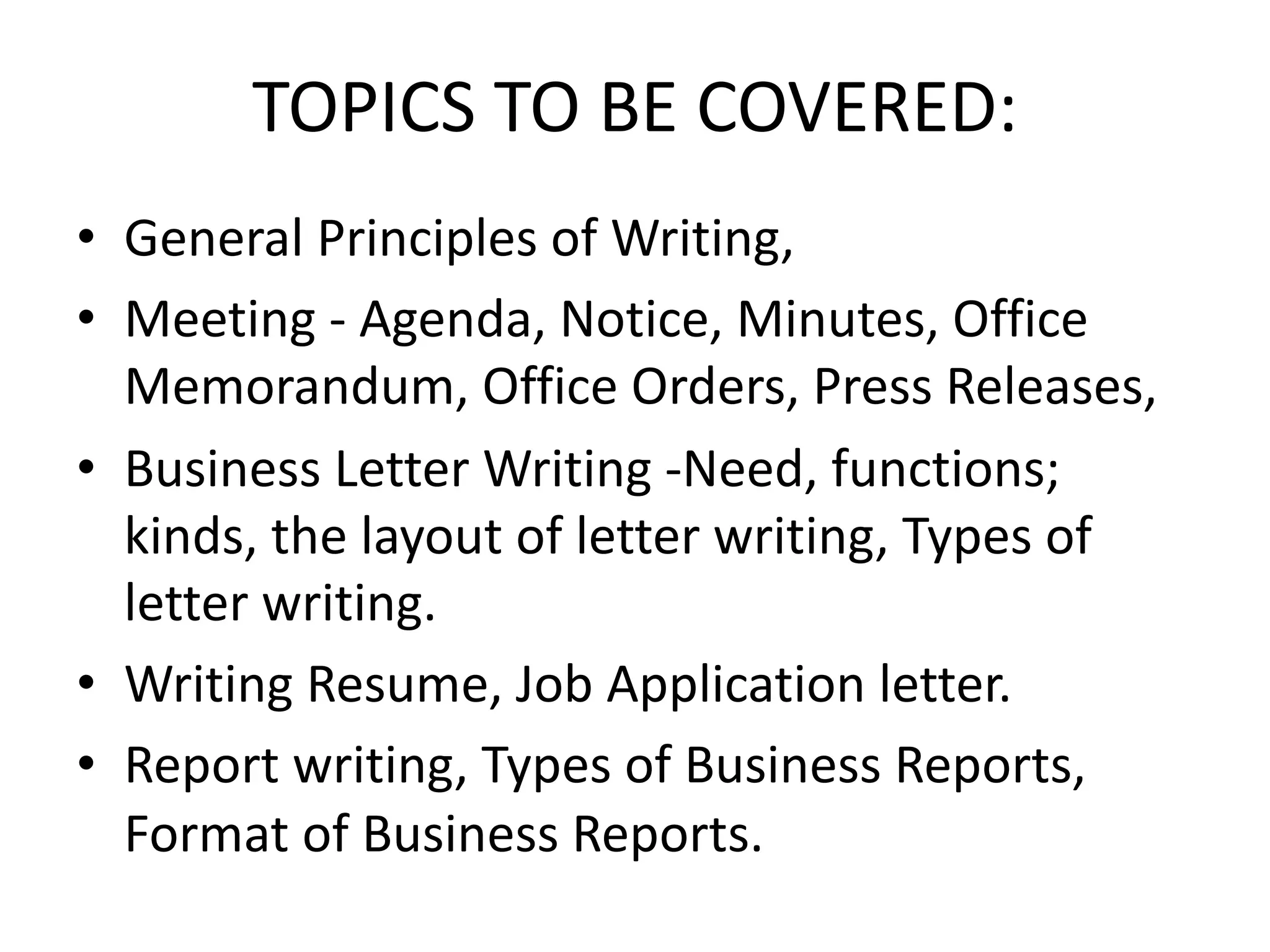This document provides an overview of business correspondence topics including general writing principles, meeting procedures like agendas and minutes, and types of business letters and reports. It discusses key elements of effective business writing such as aligning with your audience's goals, tailoring tone to the context, using structure and formatting for clarity, maintaining consistency, and including a clear call to action. Sample templates are provided for a notice of meeting letter, agenda, and minutes. The document serves as a guide for various forms of professional communication used in business.












![Notice of meeting letter template
• Here's a notice of meeting letter template you can use as an outline when writing your own:
[Name of company]
[Company address]
[Date]
[Include a brief subject line to inform the readers about the topic of the letter.]
[Start the letter by giving the recipients a notice about the meeting. State the meeting
information, such as its time, place and location. Also include the title and type of meeting, along
with its participants. Make a brief statement about the topic of the meeting.]
[Agenda]
[Subject of discussion]
[Subject of discussion]
[Subject of discussion]
[Subject of discussion]
[Subject of discussion]
[Conclude the letter by thanking the readers and reminding them to be present for the meeting.]
[Sincerely,]
[Your first and last name]
[Title]
[Phone number]
[Email address]](https://image.slidesharecdn.com/unit-3bcomm-240330154349-1577763d/75/UNIT-3-Business-Communication-notes-for-bba-13-2048.jpg)
































